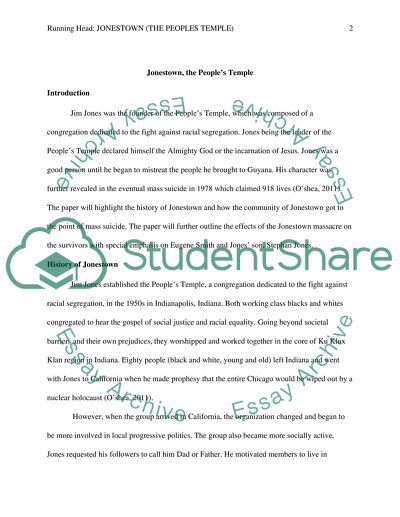Cite this document
(“Jonestown (The People's Temple) Research Paper Example | Topics and Well Written Essays - 1750 words”, n.d.)
Jonestown (The People's Temple) Research Paper Example | Topics and Well Written Essays - 1750 words. Retrieved from https://studentshare.org/psychology/1445312-jonestown-the-peopleyies-temple
Jonestown (The People's Temple) Research Paper Example | Topics and Well Written Essays - 1750 words. Retrieved from https://studentshare.org/psychology/1445312-jonestown-the-peopleyies-temple
(Jonestown (The People'S Temple) Research Paper Example | Topics and Well Written Essays - 1750 Words)
Jonestown (The People'S Temple) Research Paper Example | Topics and Well Written Essays - 1750 Words. https://studentshare.org/psychology/1445312-jonestown-the-peopleyies-temple.
Jonestown (The People'S Temple) Research Paper Example | Topics and Well Written Essays - 1750 Words. https://studentshare.org/psychology/1445312-jonestown-the-peopleyies-temple.
“Jonestown (The People'S Temple) Research Paper Example | Topics and Well Written Essays - 1750 Words”, n.d. https://studentshare.org/psychology/1445312-jonestown-the-peopleyies-temple.


